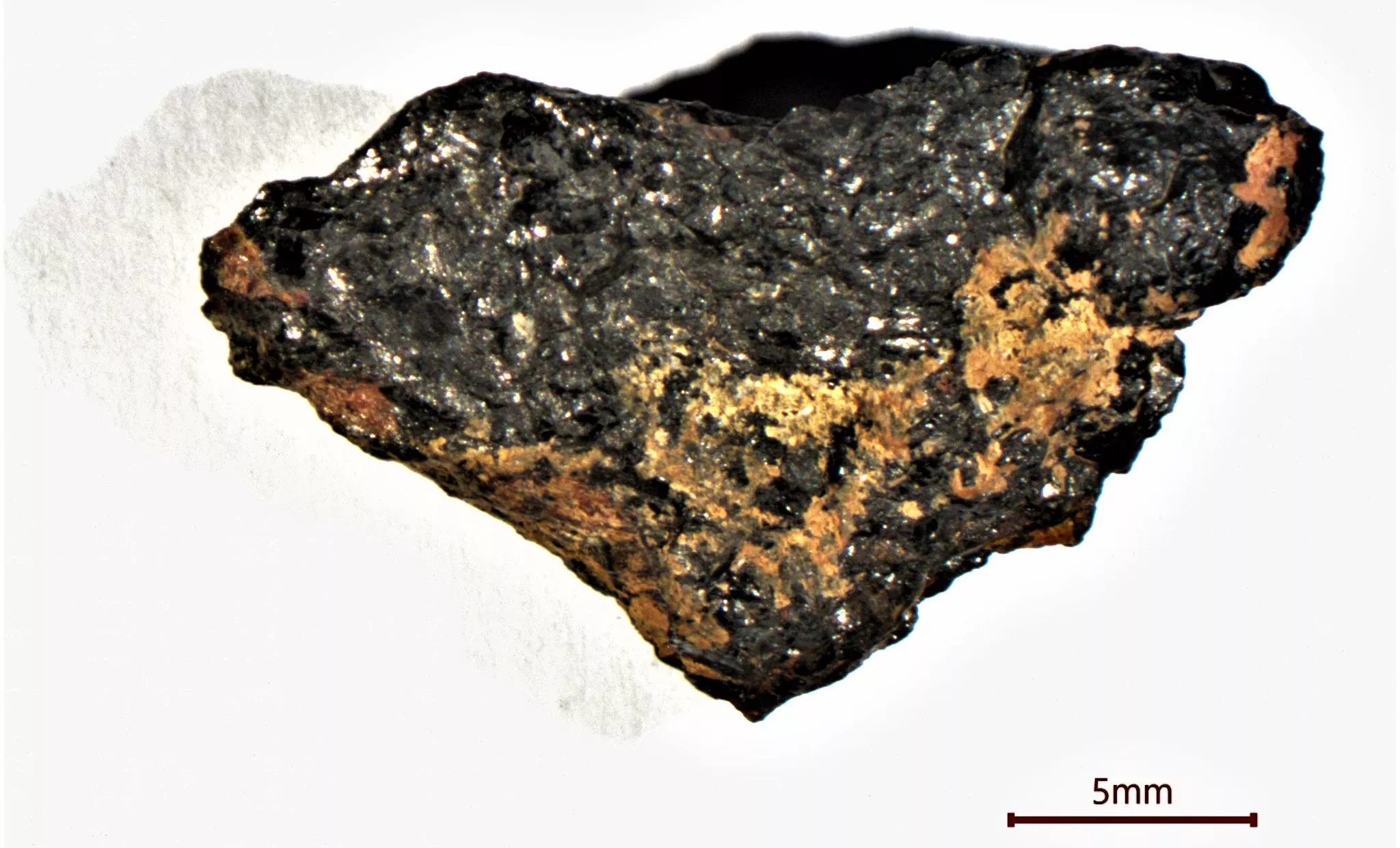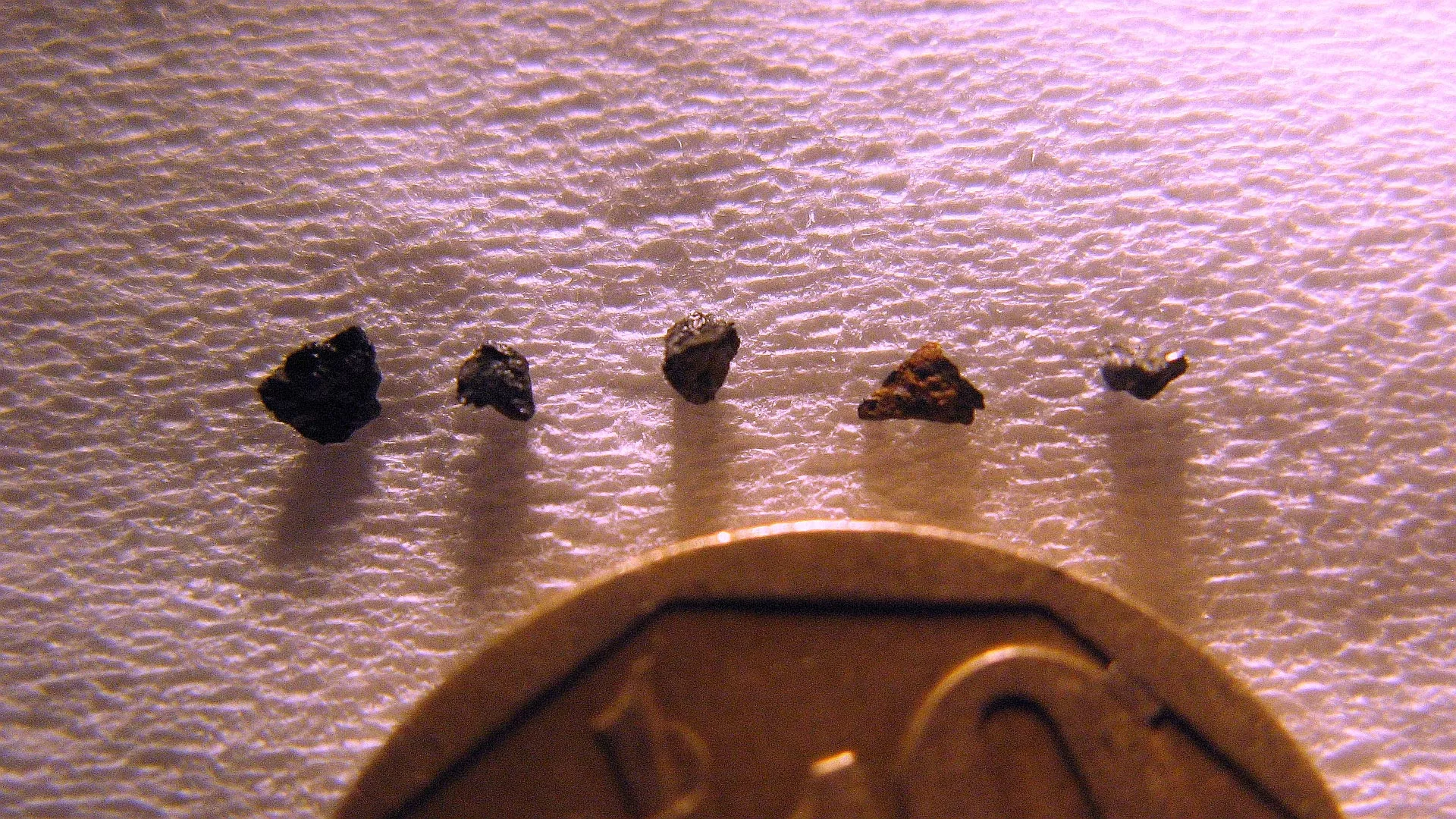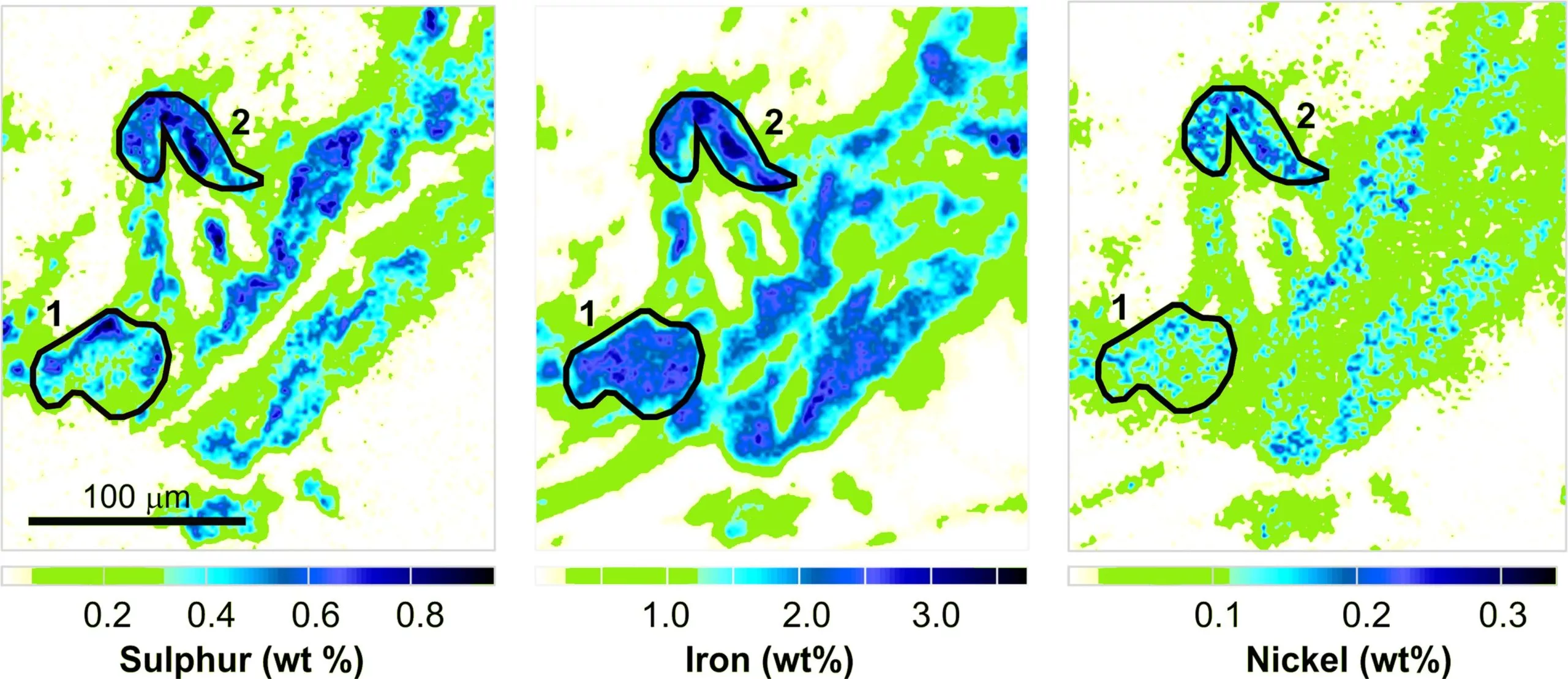The new chemical "evidence collection" shows that the stone named Hypatia from the Egyptian desert may be the physical evidence of the first supernova type Ia explosion found on earth These rare supernovae are some of the most powerful events in the universe. This is the conclusion of a new study jointly carried out by Jan Kramers, Georgy belyanin and Hartmut Winkler of the University of Johannesburg, which has been published in Icarus.

Since 2013, belyanin and Kramers have found a series of highly unusual chemical clues in a small fragment of Hypatia stone.
In this study, they meticulously excluded the "cosmic suspect" of the stone's origin in the arduous process. They pieced together a timeline and extended it to the early stages of the formation of the earth, our sun and other planets in the solar system.
Cosmic timeline
It is understood that belyanin et al's hypothesis about the origin of Hypatia began with a star. A red giant collapsed into a white dwarf. The collapse occurs in a huge dust cloud, also known as a nebula.
The white dwarf found itself in a binary system with a second star. The white dwarf eventually "ate" another star. At some point, the hungry white dwarf exploded in a dust cloud and became a type Ia supernova.

After cooling, the remaining gas atoms of supernova ia begin to adhere to the particles of the dust cloud.
"In a sense, we can say we 'caught' the 'clues' of the explosion of supernova IA, because the exploded gas atoms were drawn into the surrounding dust cloud and eventually formed the matrix of Hypatia," Kramer said
The giant "bubbles" of this mixture of supernova dust and gas atoms have never interacted with other dust clouds.
Millions of years have passed, and eventually this' bubble 'will slowly become a solid in the form of a' cosmic dust rabbit '. Hypatia's "matrix" will become a solid rock sometime in the early stage of the formation of our solar system.
This process may occur in a cold, restless outer region of our solar system - in the Oort cloud or the Kuiper belt.
At some point, the parent rock of Hypatia began to fall rapidly to the earth. The heat entering the earth's atmosphere, coupled with the impact pressure in the great sand sea in southwest Egypt, produced microdiamonds and crushed the parent rock.
The Hypatia stone found in the desert must be one of many fragments of the original impactor.
"If this hypothesis is correct, Hypatia stone will be the first tangible evidence on earth of a supernova type Ia explosion. Perhaps equally important, it shows that individual abnormal 'wrapped' dust from outer space can actually be incorporated into the solar nebula formed by our solar system without being completely mixed," Kramer said, "This is contrary to the traditional view that our solar system is formed from dust - it is completely mixed."
A voltage of 3 million volts is used for a tiny sample
In order to piece together the possible timeline of Hypatia, the researchers used several techniques to analyze the strange stone.
In 2013, a study of argon isotopes showed that the stone was not formed on earth. It must be alien. A 2015 study of the inert gas in the fragment suggests that it may not have come from any known type of meteorite or comet.

In 2018, the UJ team published various analysis reports, including the discovery of a mineral - nickel phosphide, which was not previously found in any object in our solar system.
At that stage, Hypatia proved difficult to further analyze. Kramers and belyanin are looking for trace metals, but they can't really see the details with their equipment. They need a more powerful instrument that won't destroy these tiny samples.
Kramers began analyzing a data set created by blyanin a few years ago.
In 2015, belyanin conducted a series of analyses of proton beams at ithemba laboratory in Somerset West. At that time, Dr Wojciech przybylowicz kept the 3 million volt machine humming.
Looking for a pattern
"Instead of exploring all the incredible anomalies presented by Hypatia, we want to explore whether there is a potential unity. We want to see if there is a consistent chemical pattern in the stone," Kramers said.
Belyanin carefully selected 17 targets for analysis on this small sample. All targets were selected to be far away from the minerals on earth, which formed in the cracks after the raw stone hit the desert.
"We used proton microprobes to identify 15 different elements in Hypatia with higher accuracy and accuracy," belyanin said. "This gives us the chemical 'composition' we need, so Jan can start the next process of analyzing all the data."

Proton beams also rule out the possibility of the solar system
The first important new clue provided by proton beam analysis is that the silicon content in Hypatia stone target is surprisingly low. Silicon, along with chromium and manganese, is less than 1% of what should be formed in our inner solar system.
In addition, Kramers pointed out that high iron, high sulfur, high phosphorus, high copper and high vanadium are very obvious and abnormal. "We found a consistent pattern of trace element abundance, which is completely different from anything in the solar system, whether primitive or evolutionary. Objects and meteors in the asteroid belt do not meet this situation. Therefore, next, we look outside the solar system."
Not from our neighborhood
Kramers then compared the Hypatia element concentration pattern with what he expected to see in the dust between stars in the solar arm of the Milky way.
"Let's see if the patterns we get from the average interstellar dust in the solar arm of the Milky way are consistent with what we see in Hypatia," Kramers added. "Again, there are no similarities at all."
At this point, the proton beam data also exclude the four "suspects" that Hypatia may form.
Hypatia is not formed on earth, is not part of any known type of comet or meteorite, is not formed by ordinary inner solar system dust, nor is it formed by ordinary interstellar dust.
Not a red superstar
The simplest possible explanation for the element concentration pattern of Hypatia is a red giant. Red giant stars are very common in the universe.
But proton beam data also exclude mass outflows from red giants: Hypatia has too much iron, too little silicon and too low concentrations of heavy elements heavier than iron.
Nor is it a type II supernova
The next "suspect" to consider is a type II supernova. Type II supernovae cook a lot of iron. They are also a relatively common type of supernova.
Similarly, Hypatia's proton beam data exclude a promising suspect with "chemical forensic science". Supernova type II is unlikely to be the source of strange minerals such as nickel phosphide in pebbles. Compared with silicon and calcium, Hypatia also has too much iron.
It's time to carefully examine the predicted chemical composition of one of the most dramatic explosions in the universe.
Heavy metal factory
A more rare supernova also produces a lot of iron. Type Ia supernovae occur only once or twice a century in each galaxy. But they make most of the iron (FE) in the universe. Most of the steel on earth was once iron created by type Ia supernovae.
In addition, established science points out that some Ia supernovae have left very unique "Forensic Chemistry" clues. This is because of the way some Ia supernovae are set up.
First, a red giant star collapses into a very dense white dwarf at the end of its life. White dwarfs are usually very stable for a long time and are the least likely to explode. However, there are exceptions.
A white dwarf star may begin to "pull" material from another star in the binary system. It can be said that the white dwarf 'ate' its companion star. Eventually, the white dwarf became so heavy, hot and unstable that it exploded in supernova IA.
The concentration of elements produced during the supernova explosion should be as high as that predicted by the scientific theory.
In addition, the white dwarf exploding in supernova IA is not only blown to pieces, but really blown to atoms. The material of supernova IA is sent into space in the form of gas atoms.
In an extensive literature search of stellar data and model results, the team was unable to find any similar or more suitable chemical composition of Hypatia stone than a specific set of supernova ia models.
Forensic element evidence
"All the data and theoretical models of supernova ia show that the proportion of iron is much higher than that of supernova II compared with silicon and calcium," Kramer said. "In this regard, Hypatia's proton beam laboratory data are consistent with supernova ia's data and models."
Overall, 8 of the 15 elements analyzed met the predicted range of proportions relative to iron. These elements are silicon, sulfur, calcium, titanium, vanadium, chromium, manganese, iron and nickel.
However, not all of the 15 elements analyzed by Hypatia met the prediction. Among the 15 elements, the proportion of 6 elements is 10 to 100 times higher than the range predicted by the theoretical model of type 1A supernova. These elements are aluminum, phosphorus, chlorine, potassium, copper and zinc.
"Since white dwarfs are formed by a dying red giant, Hypatia may have inherited the proportions of these six elements from a red giant. This phenomenon has been observed in white dwarfs in other studies," Kramers added.
If this hypothesis is correct, Hypatia stone will be the tangible evidence of the first supernova type Ia explosion on earth, which is one of the most energetic events in the universe.
Hypatia stone is a clue to a cosmic story that began in the early formation of our solar system and was found many years later in a remote desert scattered with other pebbles.